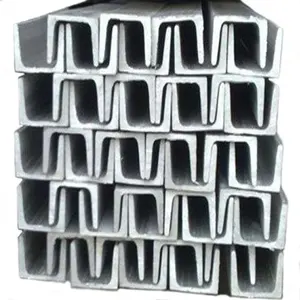









The halfen channel is a versatile structural component widely utilized in construction and engineering projects. As a fundamental element in building frameworks, halfen channels serve as a modular solution for securing various fixtures and fittings to concrete and steel structures. This introduction delves into the characteristics, types, and applications of halfen channels, providing essential insights for professionals in the industry.
There are primarily two types of steel channels that fall under the halfen channel category. The first type, known as C channels or UPE channels, features parallel flanges and offers a clean profile with ample space within the C-section for easy integration. The second type encompasses U channels or UPN channels, distinguished by their tapered flanges that may enhance strength while presenting a more substantial profile. These channels vary in weight, size, and steel composition, with options like 304 steel, known for its chromium and nickel content, and 316 steel, recognized for its corrosion resistance due to molybdenum.
Halfen channels are integral in construction for their adaptability and ease of use. They are particularly effective in scenarios where a robust fixing system is required. The halfen fixings system is designed to anchor and adjust fixtures with precision, making it suitable for a wide range of applications from heavy machinery anchoring to façade and precast construction. The channels' design allows for flexibility and adjustability, which are crucial in complex construction scenarios.
The material composition of halfen channels contributes significantly to their durability and performance. For instance, channels made from 304 steel are known for their toughness and are suitable for projects where strength is a priority. On the other hand, 316 steel channels offer enhanced corrosion resistance, making them ideal for environments prone to chemical exposure or extreme weather conditions. The choice of material directly impacts the longevity and reliability of the halfen channel fixings.
Selecting the appropriate halfen channel involves considering the specific requirements of a project. Factors such as load-bearing capacity, environmental conditions, and the nature of the fixtures to be anchored play a pivotal role in this decision. While the halfen channel price list can provide a general overview, it is the specifications and performance attributes that should guide the selection process. It is recommended to consult with suppliers to determine the most suitable channel type for your construction needs.
In conclusion, the halfen channel is a critical component in modern construction, offering a blend of strength, flexibility, and durability. Whether it is for securing heavy loads with halfen bolt and halfen t bolt systems or for intricate architectural designs, these channels provide a reliable solution. By understanding the various types and their specific applications, professionals can make informed decisions to ensure the structural integrity and success of their projects.